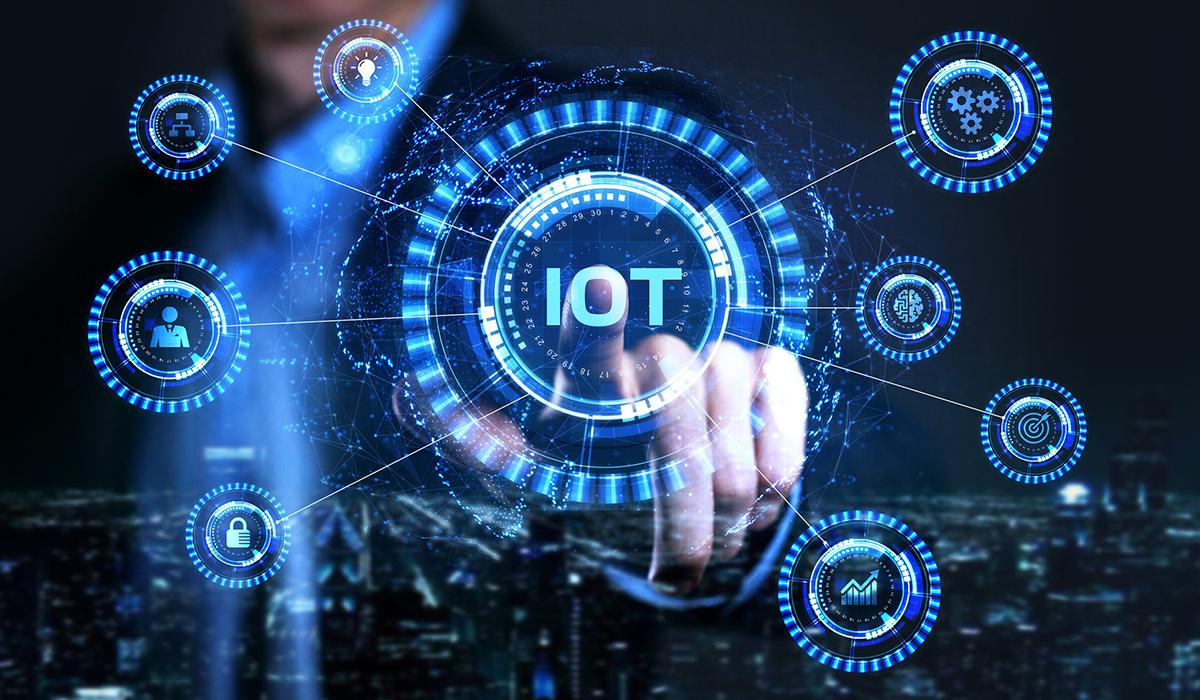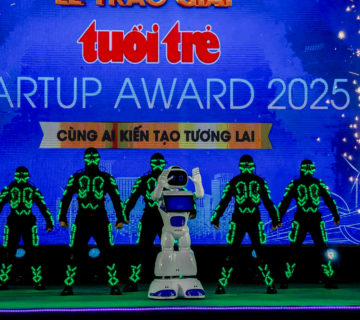UNDERSTANDING THE INTERNET OF THINGS (IOT): FROM CONCEPT TO BUSINESS APPLICATION
Connectivity is no longer exclusive to humans. In the digital age, physical devices can now “communicate” with one another—transmitting data, making decisions, and learning user behavior—all thanks to the Internet of Things (IoT). For businesses undergoing digital transformation, IoT is not just a supporting technology; it is the core of a smart, automated, and highly efficient ecosystem. But what exactly is the Internet of Things, and what value does it bring to today’s enterprises?
In a world where everything is interconnected and data flows seamlessly, IoT is rapidly becoming a pillar for innovation and sustainability. From manufacturing plants to smart buildings, logistics centers, and healthcare systems, IoT is reshaping operations and unlocking a future where data emerges as the most valuable asset.

The internet of things: Unlocking new possibilities for modern enterprises
Understanding the Internet of Things (IoT)
The Internet of Things (IoT) refers to a network of billions of physical devices connected to the internet, capable of collecting, transmitting, and responding to data in real time. What sets IoT apart is its intelligence and automation—devices interact without constant human intervention. Imagine a factory where sensors continuously monitor temperature, pressure, or machine vibrations, automatically alerting operators to abnormalities and even recommending maintenance before breakdowns occur. That is the power of IoT—proactive, precise, and capable of learning to optimize operations.
On a technical level, an IoT system consists of multiple layers – from hardware devices (like sensors and microcontrollers), connectivity systems (Wi-Fi, 4G/5G, LPWAN), data processing platforms (on-premise or cloud), to user interfaces like control dashboards or management apps. Each layer acts as a link in a continuous value chain, allowing data to move quickly and securely between endpoints.
IoT is No Longer a Distant Future
Although the concept of IoT may sound futuristic, it has already quietly permeated various industries and proven highly effective in business. In manufacturing, connected equipment management systems allow businesses to monitor machine status in real time, enabling predictive maintenance rather than waiting for failures. With continuous data collection from hundreds of sensor points, even the smallest anomalies can be detected to ensure stable, uninterrupted production.
In logistics, IoT systems help track shipment locations, monitor storage conditions such as temperature and humidity throughout transportation, and issue alerts when deviations occur. This is especially critical in sectors like food and pharmaceuticals, where quality requirements are stringent. Thanks to real-time data, businesses can adjust routes, optimize workforce deployment, and ensure goods are delivered accurately and on time.
In building and urban management, IoT paves the way for intelligent living spaces. From lighting systems that automatically adjust based on time and user density, to air quality sensors and AI surveillance cameras – all contribute to a safe, efficient, and eco-friendly environment. Technologies once seen only in science fiction films are now being implemented daily by developers, urban planners, and public organizations.

IoT brings strategic advantages to businesses
Operational Optimization – The Competitive Edge of Industry 4.0
IoT doesn’t just help businesses collect data—it enables timely decision-making by transforming that data into actionable insights. With the support of machine learning algorithms, IoT systems can “learn” from operational behaviors, forecast future scenarios, and proactively adjust processes accordingly. As a result, businesses move beyond reactive responses to anticipating issues in advance, reducing remediation costs and ensuring supply chain reliability.
A key highlight is that today’s IoT platforms are designed with scalability in mind, allowing businesses to start small and gradually expand as needed. From just a few initial sensors, systems can scale into networks with hundreds or even thousands of connected points—while maintaining strong performance and security standards.
Now Is the Time to Embrace IoT
The Internet of Things is no longer a distant concept; it has become the foundation of every modern operational and innovation strategy. As data becomes a critical resource, the ability to connect and harness it effectively is the key for businesses to accelerate, adapt, and lead the market. IoT enables not only monitoring and optimization but also real-time forecasting and decision-making—once a luxury reserved for tech giants.
In an economy increasingly driven by automation and data intelligence, adopting IoT will determine a company’s long-term competitiveness. Whether starting with a simple step like installing sensor-based device monitoring, or implementing a fully integrated real-time management system, IoT is built to evolve with your business—constantly adapting and growing alongside operational needs.
Start with a specific need, a pain point in your process. Let IoT be the tool that helps you see more clearly—and act more intelligently.






